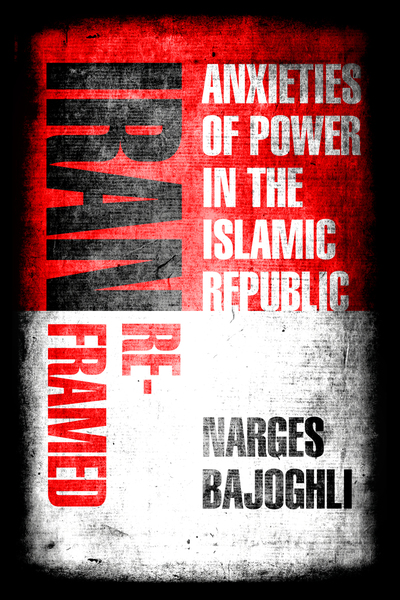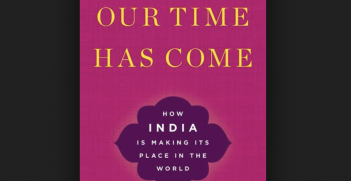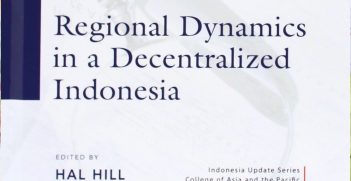Book Review: Iran Reframed: Anxieties of Power in the Islamic Republic

Regime leaders in Iran are adept at using media and popular culture to foster support. Narges Bajoghli helps readers understand the contemporary position of the Islamic Republic by examining the four decades since the Islamic revolution.
In the Middle East, the ascent of the Royal Family of Saudi Arabia, commonly known as “House of Sauds,” changed socio-political and geostrategic dynamics and Saudi Arabia became the key regional power. “Oil wherewithal” helped the royal family garner US recognition in exchange for granting the concession of oil exploration to a US-based Oil company, Standard Oil of California. At the same time, social unrest against Mohammad Reza Pahlavi’s monarchy was evolving in Iran, another potential regional power. The unrest developed into the overthrow of his regime, which culminated in the Islamic Revolution under Ayatollah Khomeini. The establishment of a Shia-led Islamic Republic capable of changing the status quo and setting its own rules and regional order threatened the dominant position of Saudi Arabia in the region.
With this development, academic research started coming out on shifting balances and changing order, the future of the Iranian revolution, and particularly on the political apparatus of the Ayatollah’s regime. Narges Bajoghli’s latest book, Iran Re-framed: Anxieties of Power in the Islamic Republic, is concerned with the post-revolutionary period. Bajoghli examines the role of regime’s cultural producer in reinvigorating the concept of martyrdom in the daily lives of Iranians and the usual phenomenon of securitisation of American invasion. Moreover, she comes out with the research on the repercussions of the Green Movement of 2009 on the Iranian socio-political milieu and on how the regime is inculcating nationalistic feelings in the youngsters, particularly after the assassination of Qasim Soleimani.
Initially, Bajoghli focuses on the institutional role of the Revolutionary Guards and Basij in protecting Iran from both internal and external threats. The author describes the shifts in the Basij. As per the testimonial accounts, the first and second generation of Basij voluntarily served in the Iran-Iraq War and joined the organisation unbeknownst of any monetary benefits or patronage. In contrast, the third generation joined the organisation for upward social mobility and job stability. They manifest more aggressive and hostile behaviour in dealing with reformers and enemies, both internal and external. The first and second generations often attribute the more hardline tendencies of the third generation of Basijis to the fact that they don’t yet have children. As they revealed to the author in an informal meeting: “These young kids do not yet instinctively think about what kind of system they wish to bequeath their children. This makes a difference in their outlook for the future of the state.”
The creation of a war culture to normalise the conflict and to militarise the culture is not exclusive to Iran. In the twentieth century, states developed war cultures to support their respective war efforts. In the post-modern period, the changing nature of warfare shifted the focus from frontlines (hard power) to popular culture (soft power). In the Islamic Republic, the same story of pious individuals willing to martyr themselves for the good of their country is told over and over through different media.
With the advent of the Gulf War, the regime generated favourable behaviour from the people by broadcasting war documentaries and showing the atrocities of the Iraqi army. At the beginning of the war, the War Group Team at the Islamic Republic of Iran Broadcasting produced television documentaries about the war and, shortly thereafter, the Ministry of Culture and Islamic Guidance created the War Films Bureau at the Farabi Cinema Foundation with the task of depicting the “sacred defence” as a spiritual question. When the Iranian army was fighting on the frontlines, Iranian politicians and cultural producers used “Imam Hussain” to symbolise their position vis-à-vis the invading Iraqi army. Iranian soldiers were likened to Imam Hussain and his companions, and the battlefront was thus framed as a pious space and the soldiers lauded as ideal citizens. This generated considerably favourable popular support for the regime. However, regime cultural producers faced intense challenges from the Iranian diaspora and foreign media where, on the other hand, independent media producers generated support by producing anti-regime movies and documentaries and were alleged as gheyr-e khodi (outsiders).
In chapter four, the author discusses the changing strategy of regime cultural producers in making anti-MEK (Mujaheddin-e Khalq Organization) films as the Iranian audience was no longer engaging with movies on the Iran-Iraq War. The MEK opposed the Iranian regime and used violence, assassination, kidnapping of political leaders, foreign support, and sabotaging of the Iranian military and its nuclear assets. Although there is little evidence that young people in Iran were persuaded by the armed opposition organisation, the MEK has become a scapegoat for all forms of opposition to the Islamic Republic. Moreover, because the MEK continued to receive funds and support from the United States and Saudi Arabia, including for media campaigns against Iran, and it continued to give intelligence about Iran to Israel, Saudi Arabia, and Western powers, the Islamic Republic continued its media campaign against the organisation. According to Bajoghli, these regime production offices sought to attract as many young filmmakers as possible, believing that they could better understand their generation and thus help make media targeted at them. Filmmakers such as Morteza Payeshenas are valuable in this cultural cosmos. He was critical of many of the same things that his anti-regime peers objected to, such as social restrictions, especially those targeted at women and youth. However, he believed these restrictions could eventually be reformed within the Islamic Republic. “There is a lot to criticize the Islamic Republic about,” he explained. “I just don’t want my generation to go into the arms of something worse just because they want to change.”
Interestingly, the author focuses on the shifting paradigms of filmmaking patterns used by regime cultural producers in the post-Green Movement period. She finds and discusses in her last chapter, titled “Producing Nationalism,” that the regime filmmakers were not able to gather the attention of young audiences and therefore, they had to ponder new strategies for engagement. Their old stories were concerned with the Shi‘a ethos of fighting against oppression that was embodied in the “Karbala” mythology of Imam Hussein. However, these stories no longer resonated with their desired audience; they needed a new unifying story. This new story presented itself in the form of “populist nationalism” in the general population.
In the post-modern world, there is a resurgence of nationalism, and Iran is no different in rallying its population behind the call of nationalism, preserving national interest, and protection of its sovereignty. Nationalism has long played a role in the cultural productions of the Islamic Republic. Yet, after the Green Movement protests, regime cultural producers began to push for something more deliberate: they attempted to completely reimagine the Revolutionary Guard as an institution defending the Iranian nation, whereby nationalism— and not a political interpretation of Islam—was the Revolutionary Guard’s driving force.
In toto, the book deals with a great scholarship of an anthropological perspective of the Iranian Cultural and Media House and how the institution is helping to reinstate legitimacy amongst anti-regime Iranians and strengthen the faith of pro-regime Iranians. Moreover, it astutely finds the propaganda of both domestic and foreign media intending to serve each other’s vested interests. It also introspects the hard-liners’ approach to dealing with ongoing resentment and frustration by making the lives of Iranians difficult with strict rules. As per the accounts of war veterans of the first and second generations, where many of them took part in the Green Movement of 2009, their reservations manifest with the domestic policies and the regime’s securitisation of the American invasion to mask their inadequacy.
Vishal Rajput is a Research Assistant at the Centre of Security Studies and Simulation, United Service Institution of India and is pursuing post-graduate degree in International Relations from Jamia Millia Islamia, New Delhi.
This article is published under a Creative Commons Licence and may be republished with attribution.





